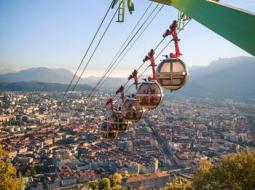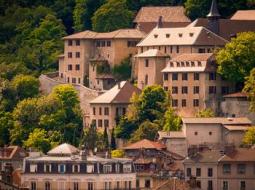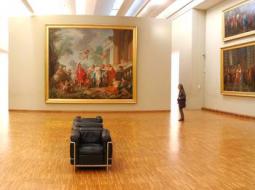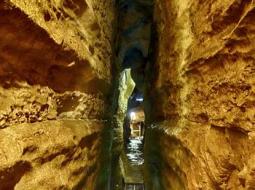Thessaloniki gets ready for its metro launch in November
The underground rapid transit lines have been under construction for almost two decades due to various project delays
 TheMayor.EU logo
TheMayor.EU logo 
As an ancient city founded in the Gallo-Roman era, Grenoble benefits from an exceptional geographical location and natural environment, whose potential has attracted people from all over the world. Its physical and geographical constraints have not been an obstacle to the exchange with the outside world, but the opposite. They have undoubtedly stimulated the impulse to exchange with those who live beyond the mountains.
The vitality of the paper and cement industries, the invention of hydroelectricity, led the city in the 19th century to welcome the first migrants from the South (Spain, Greece, Italy) and from the East (Armenia, Russia, Asia).
In 1968, the world discovered its natural environment, but also the vitality of its associative and cultural nature. The first artistic exchanges with the foreign world began, the first twinnings, in particular with the territories of origin of its immigration (Maghreb, sub-Saharan Africa and Vietnam).
Becoming one of the first international scientific and university centres, promoting sustainable development and social policies, Grenoble has developed from the end of the 1970s till today a strong policy of hosting political refugees ( Chile, Argentina, Cambodia), academics, researchers and foreign companies (United States, Germany, Brazil, Australia), by favouring the installation of expatriates over more or less long periods.
Grenoble is a commune in the south-east of France, capital of the department of Isère, former capital of Dauphiné. Its population is 160,649 inhabitants.
At the economic level, 7 out of the 10 largest companies are foreign (30 different nationalities, 42,000 employees on 550 sites), the most important being American, German and English. The Grenoble universities opened doors to foreign students very early (1 in 5 students today), and helped open universities abroad, from Bamako to Ho Chi Minh City. It is rare to find a university in the world that does not have a partnership with a laboratory or faculty in Grenoble.

Re-live one of the most historical events of French History: The French Revolution!
The Vizille Estate is first and foremost, a castle that had played a key role in history. Moreover, it has a landscaped park that has been classified as a “Remarkable Garden.” But this is also the only museum dedicated to the French Revolution that brings together so many valuable works. Set foot in this historic and natural landscape.

Get a bird’s eye view of Grenoble and the surrounding valley with a ride up in the cable car. Inaugurated in 1934, « le téléphérique de la Bastille » was the first urban cable car, before being transformed into what local people call « The Bubbles » (1976). These round gondola lifts with their clear sides will take you up to the Bastille fort: 500 meters up in just 5 minutes!

No need to be a nun to enjoy popular local art in this convent!
Dominating the city from the Bastille’s slopes,the Dauphinois Museum is settled in the Sisters of the Visitation’s convent. Above all, it is dedicated to popular cultures and human beings of the Dauphiné Alps.

Created in 1798, the Grenoble Museum of Art lets you travel uninterrupted through eight centuries of Western art, and includes world-class works representing each period.

Do you dare venturing into the shadows and the entrails of the Vercors? Listen to the sound of the water drops and discover the marvellous show that only mountains and water can offer. The show’s been going on for thousands of years!
It is here, at the foot of the cliffs and just 15 minutes away from Grenoble, that the natural Sassenage Cisterns wind their way in the rock. Just outside the city, a pleasant path looks over the Furon torrent and leads to the cave. Inside, you’ll find a surprisingly refreshing green world. Just what you need in the summer!
11, boulevard Jean Pain
CS 91066
38021 Grenoble Cedex 1, France